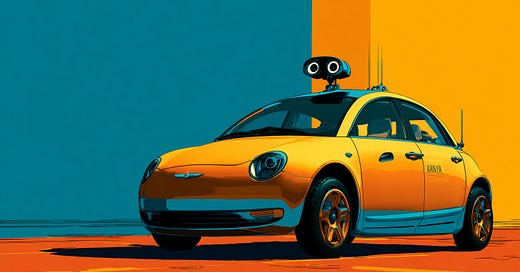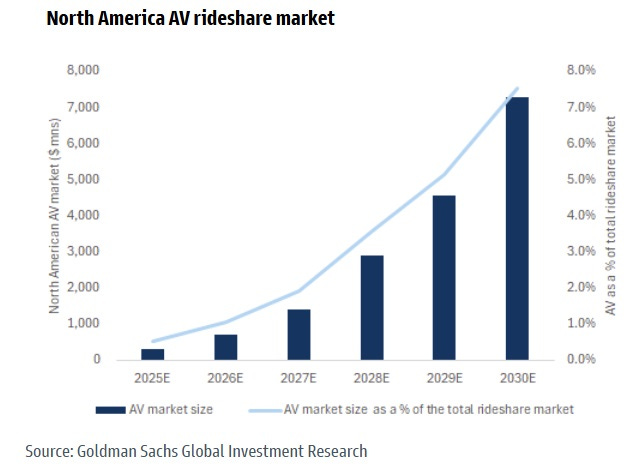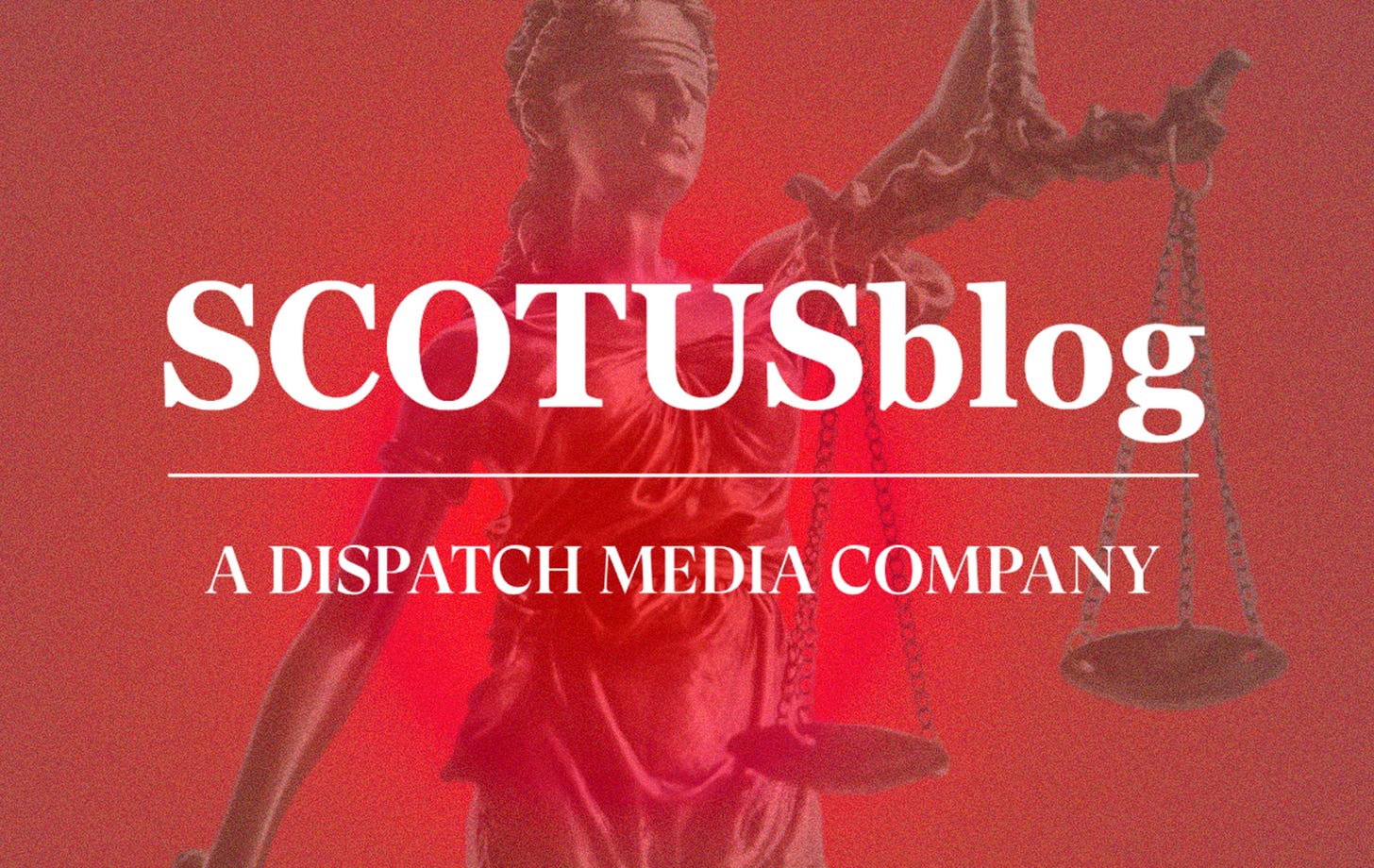🤖🚗 Self-driving cars are finally shifting gears
Ubiquitous AVs would mean a profound economic transformation. Also: much safer streets!
My fellow pro-growth/progress/abundance Up Wingers,
For years, self-driving seemed like an exciting new technology — but one perpetually stuck in beta. (Yes, I stopped myself from using “neutral.” It wasn’t easy.) Visionary promises were made, ambitious launch timelines missed, and Elon Musk’s Tesla robotaxi forecasts started feeling as science fictional as his colonization dreams of the Red Planet. That, rather than a hard-headed product roadmap.
But then, slowly and quietly and then seemingly all at once, something changed. Waymo now logs more than 250,000 paid rides a week. (“If you haven’t taken one, you will soon,” predicts The Wall Street Journal.) Tesla is testing robotaxis on the streets of Austin. What once may have felt overhyped — definitely the main media message — is now arriving, not with a fender-bending bang but with a soft, reassuring ping from a smartphone app.
Bill Gates once said we overestimate what can happen in a year and underestimate what can happen in a decade. When it comes to self-driving cars, 20 years after DARPA’s first AV challenge, the underestimation is catching up. The shift also fits Ernest Hemingway’s quip about going bankrupt: gradually, then suddenly. The old narrative — that autonomous vehicles were forever just over the horizon, like fusion energy — has collapsed. And that’s a welcome bankruptcy.
America’s roads claim around 40,000 lives annually, most due to human error. Robotic cars, unlike people, don’t get drunk, distracted, or drowsy. In fact, they don’t get emotional at all, which is more than can be said for anyone listening to their quarterback throw a pick six on the radio.
Waymo’s recent study of 56 million miles shows its cars reduce vehicle crashes at intersections by 96 percent compared to humans. Pedestrian injuries dropped 92 percent. The technology is no longer just a futuristic Up Wing hypothetical — it’s measurably safer in the here and now.
Ubiquitous AVs would also mean a profound economic transformation. Automated freight transport could slash the cost of, well, just about everything moved by truck. (And add this to that scenario: “The Holy Grail of Automation: Now a Robot Can Unload a Truck.”) Cash-strapped city transit agencies could deploy robot buses, expanding service while trimming budgets. Most tantalizingly, cities could reclaim all that land now wasted on parking.
Yet as Tesla’s cautious rollout in Austin shows, technical promise doesn’t mean automatic readiness to scale. Early riders praised the car’s smooth handling and Tesla-flavored features like personalized playlists. But one unsettling error — briefly driving into oncoming traffic — might highlight the apparent fragility of the system.
Goldman Sachs, in a report this week, gives its early take: “[The] navigation related error from one early consumer ride, and other factors like geofencing and a version of the software that at least for now is specific to Austin, suggests in our view that scaling in the near-term will be slow. We also believe this suggests that it will be some time before consumers can use FSD on their personal vehicles in a wide operating area.”
Still, the market implications are massive, according to the bank. Waymo could reach $7 billion in annual revenue by 2030, with fat 40–50 percent gross margins. Likewise, Tesla could turn its millions of vision-equipped vehicles into cash-flowing assets (but only if it solves for safety and scale). Aurora is betting on freight, aiming to cut trucking costs by two-thirds with a licensed virtual driver model. Even Uber and Lyft may survive, pivoting to become autonomous demand aggregators rather than employers of drivers.
The primary obstacles may be no longer mostly technical. They’re institutional. US regulation remains a patchwork. Liability law hasn’t adapted to machines driving themselves. More congestion pricing may be needed. And insurers are stuck in yesterday’s risk models, even as some players like Tesla flirt with self-insurance.
Finally, the foggy road to automobile autonomy is clearing.
As Congress Does Less, The Courts Are Doing More
Breaking news: The Dispatch has acquired SCOTUSblog, the gold standard in Supreme Court analysis.
Reliable coverage of the Supreme Court has never been more important. With an unbridled executive branch and a Congress eager to surrender its constitutional prerogatives, the federal judiciary is playing an increasingly important role in shaping the country’s direction.
Join 600,000 loyal readers and check out The Dispatch today. No insulting clickbait, no false outrage, no annoying auto-play videos—just reliable journalism that helps you understand the big decisions that will shape our nation’s future.
Faster, Please! readers: Take 25% off a Dispatch membership today
Micro Reads
▶ Economics
You Can’t Legislate Fertility - WSJ Opinion
Like Great-Grandparent, Like Great-Grandchild? Multigenerational Mobility in American History - NBER
▶ Business
The Magical Thinking of Masa Son - Bberg Opinion
AI is the Strategy: From Agentic AI to Autonomous Business Models onto Strategy in the Age of AI - Arxiv
▶ Policy/Politics
▶ AI/Digital
▶ Biotech/Health
Gilead’s HIV Breakthrough - WSJ Opinion
Suspended animation is here. Just not how you'd expect - Science Focus
▶ Robotics/Drones/AVs
Musk Finally Launched His Robotaxi — Kind Of - Bberg Opinion
▶ Up Wing/Down Wing
Technophobia has a body count - Freethink
Theory Proposing Three-Dimensional Time as the “Primary Fabric of Everything” Could Unify Quantum Physics and Gravity - The Debrief
▶ Substacks/Newsletters
Neurodivergent Users Are Making AI Better for Everyone - AI Supremacy
Shifting the Cost of NEPA Reform - Breakthrough Journal
A Fed’s-Eye View of Labor Markets - Conversable Economist
How renewables are saving Texans billions - The Climate Brink
Why Congress Should Protect AI Startups - Joe Lonsdale







